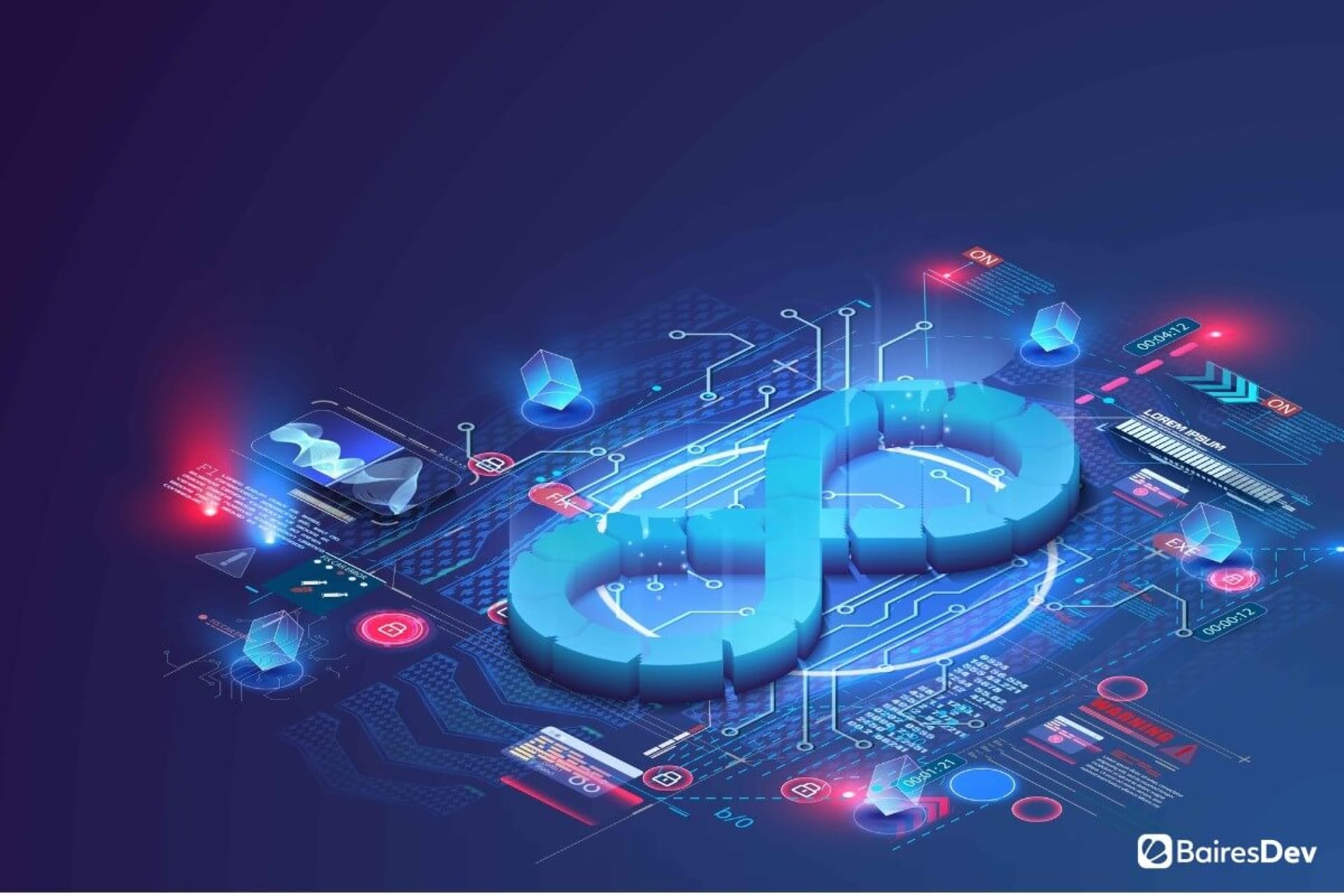Machine learning has become one of the hottest topics in business development. That top honor is well-earned, as ML makes it possible for companies to expand and extend products, development lifecycles, supply chains, and even customer support in ways never thought possible.
For those that aren’t up to speed, machine learning is a branch of artificial intelligence that focuses on the use of data and employs algorithms to attempt to replicate how humans learn. By making use of ML, business software improves faster and can adapt on the fly.
With MLOps, you take machine learning and integrate it with DevOps. To understand this marriage of technology, you’ll first need to understand what DevOps is.
DevOps is the intersection of software development and IT operations with the aim to shorten the life cycle and provide for continuous delivery and integration. When these 2 departments communicate and collaborate at this level, it’s possible for companies to become exponentially more agile and software deployment is considerably faster and more reliable.
DevOps has become a crucial operational procedure for any business looking to deploy containers at scale. In fact, deploying reliable containers on this level depends on a DevOps style of operation, especially when automation comes into play.
When you combine machine learning and DevOps, you get MLOps, the next-gen method of using experimental machine learning models within production environments. This new intersection is the communication/collaboration between data scientists and IT operations teams. Like DevOps, MLOps is designed to eliminate waste, automate as much of the life cycle as possible, and produce more consistent insights.
The process of MLOps looks something like this:
- Machine learning models are developed.
- Those models are then tested and developed within isolated systems.
- When an algorithm is ready to launch, it’s transitioned to production systems.
Of course, both data scientists and operations work together to solve any problems discovered during the entire process. But one thing that is crucial to the process is the automation portion.
As with DevOps, the goal should be full automation, such that the transition from testing to production happens automatically. And even once an algorithm has reached production, any changes and tweaks made to the algorithm should then run through automated testing and transitioning. That layer of automation adds a significant level of complexity to the process, but once it’s working correctly, it will save your business considerable time and money.
What problems does MLOps solve?
First and foremost, MLOps puts data in the center of the software development lifecycle. This not only makes employing data solutions more efficient, but more capable. This also shrinks that void between those with business knowledge, those with IT knowledge, and those with data knowledge.
For any company looking to seriously get the most out of massive troves of data, MLOps brings together the insight of these departments such that the combined effort will be a major improvement over them working as individuals.
Other problems MLOps solves include:
- Much easier for businesses to follow data compliance and other regulations.
- Bottlenecks in the data delivery pipeline are improved or completely removed.
- Very complex data is more efficiently used.
- Massive amounts of data can be more easily used.
- Complicated algorithms can be developed, trained, and deployed faster.
Other benefits to be gained by employing MLOps include:
- Greater visibility into the machine learning process.
- A better understanding of ML systems for more than just data scientists.
- Greater performance and scalability of ML models.
- Refinement of your organization’s data-focused goals.
- More efficient model tuning.
- A much richer and better understanding of your customers’ needs.
- Considerable reduction in costs.
What’s required for MLOps
Aside from getting your machine learning and operations teams working together, you’ll need to add the following into your process:
- Gathering, cleaning, and labeling data to be used.
- Creating features for the process, discovered from the cleaned data.
- Developing the ability to store the features in a repository.
- Using machine learning methods to train models.
- Automatic transitioning of models from testing to staging to production.
- Monitoring the deployed models for data and model drift.
- Debugging problems that were discovered in the monitoring.
- Retraining models, based on observations or new features to be added.
- Documentation for the entire process.
How to get started with MLOps
In order to get started with MLOps, you’ll first need staff capable of handling the task. You’ll need data scientists, developers who are familiar with GitOps and other software development lifecycle automation, and an IT operation team capable of implementing this new model. You’ll also need:
- An understanding of data engineering workflows.
- A scalable collaboration platform that is geared toward data science and machine learning.
- A versioning system (such as Git)
- User management and access control.
- A solid understanding of languages such as Python, R, Java, Scala, and Go.
Conclusion
If you’re serious about ramping up machine learning within your company, you would be remiss to not look into combining the efforts of your machine learning specialists with your operations team. Creating an MLOps division could not only scale the effort but automate it such that it performs way beyond your expectations to deliver new functionality and efficiency to your company. Your customers, staff, and bottom line will thank you for it.
If you enjoyed this, be sure to check out our other DevOps articles.









